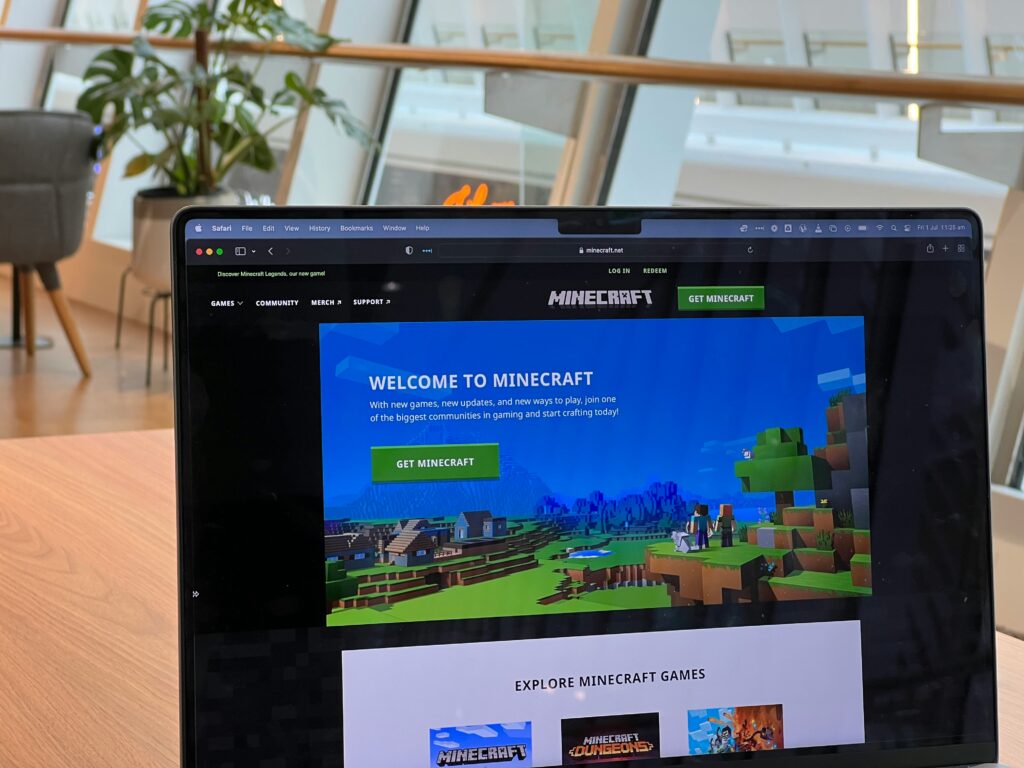
You’ve won some Minecraft tournaments, amassed a loyal following, have a strong and informative website, and created a buzzing community. So, what’s the next step? You may be interested in transforming your gaming success into a revenue stream.
However, turning Minecraft PvP servers into a profitable business isn’t as simple as welcoming players. It’s a masterclass in blending solid infrastructure, innovative marketing, and dynamic community interaction.
Let’s explore the journey of monetizing your Minecraft PvP server, diving into real-world examples to uncover the financial strategies that drive success.

What are the key considerations for a Minecraft PvP Server?
Running a successful Minecraft PvP server isn’t just about managing costs and revenues. It’s also about ensuring a high-quality, lag-free experience for your players. Here are some crucial factors you should consider before spinning up a Minecraft PvP Server:
- Anti-cheat systems: Implementing robust anti-cheat systems is essential to maintain fair play and a positive player experience.
- Regular updates: Keeping game modes and maps fresh through regular updates helps retain player interest and engagement.
- Strong moderation: Active moderation is necessary to handle conflicts and maintain a friendly community atmosphere.
- Balanced gameplay and monetization: Avoiding a “pay-to-win” model ensures that all players have a fair chance, which is crucial for long-term success.
- Community events and tournaments: Hosting regular events and tournaments fosters a vibrant community and encourages player retention.
- Constant marketing efforts: Ongoing marketing efforts are necessary to keep attracting new players and mitigate high player churn.
Realistic assessment
While the potential returns are significant, creating a large-scale Minecraft PvP server involves:
- Technical expertise: Effective server management, network infrastructure, and game mechanics knowledge are essential. Consulting with experienced professionals can be beneficial.
- Initial investment: Costs can vary based on actual market rates and unforeseen expenses. A flexible budget and contingency plans are advisable.
- Market demand: Understanding the demand for your server type through market research can prevent costly mistakes.
- Player acquisition and retention: Effective marketing and community engagement strategies are key to attracting and retaining players.
- Scalability: Your infrastructure should be scalable to handle varying player numbers without performance issues.
- Community engagement: Building a strong community through forums, social media, and regular interactions is crucial for player retention.
What are the costs associated with Minecraft PvP servers?
Spinning up a Minecraft PvP server for 500-1000 players is like building a digital empire. A lot hinges on your choices and how you choose to monetize it.
While there is good money to be made in cracked servers—a server that allows players to join without needing a Minecraft account—we’ll be focusing on PvP servers. These servers are specifically designed for player-versus-player combat and require a paid Minecraft account.
Let’s break down the initial setup costs:
Infrastructure costs
- High-performance dedicated servers: You’ll need top-tier dedicated servers to accommodate a high player count and support intensive game modes. For instance, our Ultimate Bare Metal Server with 2 x Gold 6140 Processors costs approximately $400 per month.
- DDoS protection: Enhanced DDoS protection costs around $100 per month to safeguard against potential attacks and disruptions.
- Load balancers: Distributing traffic across multiple servers to maintain smooth performance costs about $150 per month.
Total monthly infrastructure cost: $650
One-time setup costs
- Custom plugin development: To offer unique features like complex PvP modes and anti-cheat systems, the one-time development cost is around $1,200.
Total one-time costs: $1,200
Monthly operational costs
- Part-time moderators: With 10 part-time moderators, the monthly cost is around $6,000.
- Tournament prizes: Hosting monthly PvP tournaments with attractive prizes will amount to around $500 per month.
Total monthly operational cost: $6,500
Calculating the total costs
Combining the initial setup and ongoing costs:
- Total first-month cost: $8,350 (This includes initial setup costs and the first month of operational costs: $1,200 + $650 + $6,500)
- Total ongoing monthly cost: $7,150 (This includes monthly infrastructure and operational costs: $650 + $6,500)
Revenue model and financial projections
To turn a profit, your Minecraft PvP server needs a solid revenue model. Here’s a breakdown:
- Basic Access: Free. This attracts players to your server, creating a player base from which to upsell premium features.
- VIP Rank: $15 per month, offering extra kits, /fly in the hub, and priority queue.
- MVP Rank: $30 per month, providing VIP benefits plus exclusive kits, /feed, and /heal.
- Cosmetic Items Shop: Average purchase of $5 per player.
Estimating monthly revenue
With a player base of 1,000:
- VIP Members: 500 members × $15 = $7,500
- MVP Members: 300 members × $30 = $9,000
- Cosmetic purchases: 1,000 players × $5 = $5,000
Total estimated monthly revenue: $21,500
Calculating monthly profit
Monthly Profit: $21,500 (Revenue) – $7,150 (Costs) = $14,350
Return on Investment (ROI) calculation
To assess the financial viability, we calculate the ROI:
- Initial Investment: $8,350
- Monthly Profit: $14,350

In this scenario, the server achieves an impressive 1,960.7% ROI in the first year, breaking even in about 1.5 months.
What are the most successful Minecraft PvP servers?
As you can see, building a successful Minecraft PvP empire is no small feat. It can be done, but the initial investment and time resources to be profitable are extraordinary.
That said, many have made hundreds of thousands and even millions per year from Minecraft servers. Here are two of those successful platforms:
Hypixel
Since 2013, Hypixel has been a leading Minecraft server renowned for its diverse minigames, vibrant community, and record-breaking player engagement.
Mineplex
Though discontinued in 2023 (with rumors of an upcoming revival), Mineplex achieved sustained player interest through continuous updates and community events—even winning the “Most Popular Minecraft Server Network” Guinness Record in 2015.
Looking to migrate without overlap costs?
Migration shouldn’t drain your budget. With HorizonIQ’s 2 Months Free, you can move workloads, skip the overlap bills, and gain extra time to switch providers without double paying.
Get 2 Months FreeHow HorizonIQ can help you spin up Minecraft PvP servers
Creating a successful Minecraft PvP server is ambitious but achievable with careful planning, substantial investment, and ongoing effort. By learning from successful servers and focusing on quality infrastructure, security, custom content, strong moderation, and effective marketing, you can build a thriving Minecraft PvP server.
At HorizonIQ, we’ve helped many gaming companies develop the infrastructure they need to find success. With our bare metal infrastructure, DDoS mitigation, firewalls, and advanced load balancing solutions, we can enhance your game server performance, scalability, reliability, security, and user experience.
Here’s how:
- Efficient load distribution: Ensure smooth gameplay by distributing traffic evenly across servers.
- Dynamic scaling: Handle sudden traffic spikes, allowing for seamless scaling.
- Redundancy: Implement failover mechanisms to minimize downtime.
- DDoS mitigation: Detect and mitigate DDoS attacks to maintain service availability.
- Lag-free: Reduce latency by placing load balancers closer to your player base.
- Managed services: Reduce your overall infrastructure and maintenance cost by optimizing your resource use.
Ready to reduce latency and ensure seamless gameplay experiences? Check out our bare metal servers or advanced load balancing solutions to get started.



